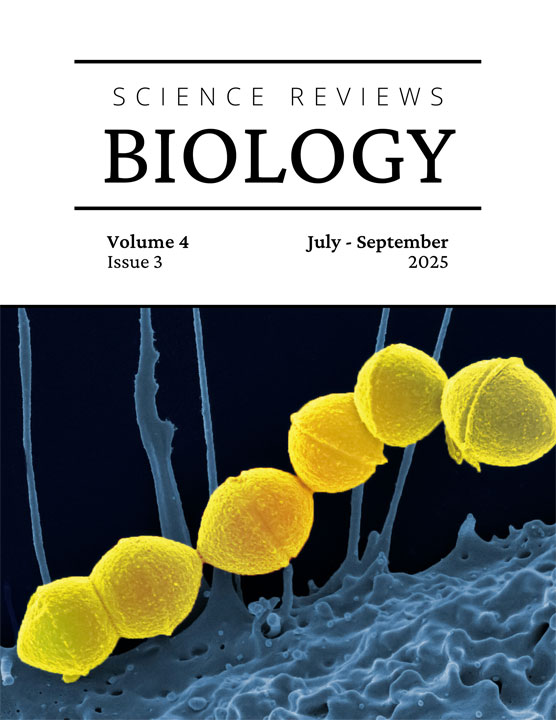 Science Reviews - Biology is an international, multi-disciplinary, peer-reviewed open access journal that publishes high-quality reviews and research articles across various disciplines of biology, including molecular biology, genetics, cell biology, ecology, and others.
Science Reviews - Biology is an international, multi-disciplinary, peer-reviewed open access journal that publishes high-quality reviews and research articles across various disciplines of biology, including molecular biology, genetics, cell biology, ecology, and others.
In addition to the online version, Science Reviews - Biology is also available in print, providing a tangible format for readers and researchers. The journal is printed in Canada and can be found at the Library of Congress, Library and Archives Canada, and other locations, further expanding the reach and accessibility of our published content. Authors of articles printed in Science Reviews receive a complimentary printed copy of the journal with their articles delivered by regular mail.
Open Access. Science Reviews is published quarterly and follows the Open Access publication model, enabling free and unrestricted access to published articles. The article processing charges are modest ($100) and are paid by authors or their institutions.
Free publications. Science Reviews is published every quarter. To encourage high-quality reviews, research, and publications, we publish free of charge in each issue one exceptional article, selected by the editorial board. From time to time, we also offer the winner the position of our paid editor.
Rapid Publication Decisions. Typically, manuscripts are reviewed and the first decision is provided to the authors approximately 3 weeks after the submission of the manuscript.
Rapid Online Publication. Articles accepted for publication immediately appear online in the form of a Rapid version. After the release of the quarterly issue, the Rapid version is replaced by a permanent, final version.
Printed journal. Authors of articles printed in the Science Reviews receive a free printed copy of the quarterly journal by regular mail.
Aims. Science Reviews - Biology aims to publish reviews and research papers in the field of biology. Our goal is to encourage scientists to publish high-quality papers that highlight advances in their respective areas of expertise within biology. To foster quality reviews and research articles, we are waiving the article processing charges per issue to the author(s) of one exceptional article, selected by the editorial board.
Science Reviews Publication Ethics Statement. In addition to rigorous peer review to ensure the high scientific standard of publications, we have a zero-tolerance policy for plagiarism and use the best available online tools to check each submitted paper for plagiarism. Please refer to our Publication Ethics and Publication Malpractice Statement for more details.
Copyright / Open Access. Articles in Science Reviews are published as open access and distributed under the terms and conditions of the Creative Commons Attribution License (CC BY 4.0). The copyright is retained by the author(s).
Editor-in-Chief Charlotte E. Hacker, PhD. The Snow Leopard Conservancy; Sonoma, California, USA. ORCID, Scopus Editorial Board Humara Naz Majeed, PhD. Department of Biochemistry, Government College Women University, Faisalabad, Pakistan. ORCID, Scopus Sergey N. Arkhipov, PhD. Department of Physiology, Wayne State University, School of Medicine, Detroit, Michigan, USA. ORCID, Scopus Johanna Prüller, PhD. Randall Division of Cell and Molecular Biophysics, King's College, London, UK. ORCID, Scopus Lúcia Santos, PhD. Department of Physiology, University College Cork, Cork, Ireland. ORCID, Scopus Pia Steigler, PhD. University of Cape Town: Observatory, Western Cape, ZA. ORCID, Scopus Muhammad Tahir Hayat, PhD. Faculty of Biological Sciences, Quaid-i-Azam University, Islamabad, Pakistan. ORCID, Scopus Luigi Caputi, PhD. Indipendent Researcher: Rome, Italy. ORCID, Scopus
Recent Issues
Science Reviews - Biology. Vol 1, issue 1, 2022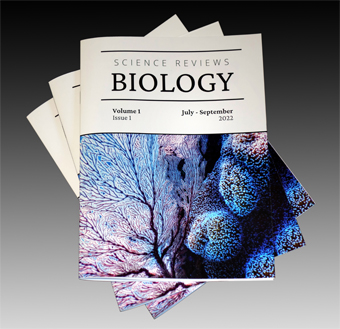
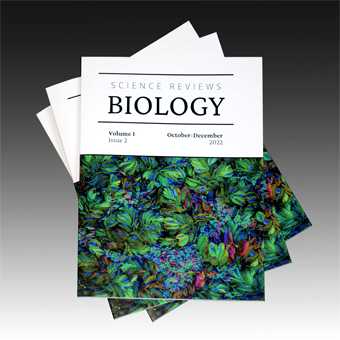
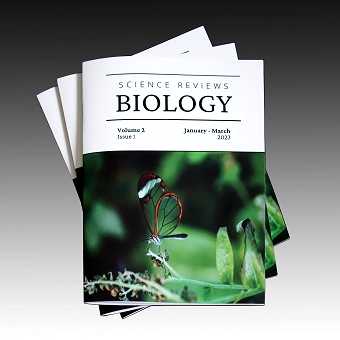
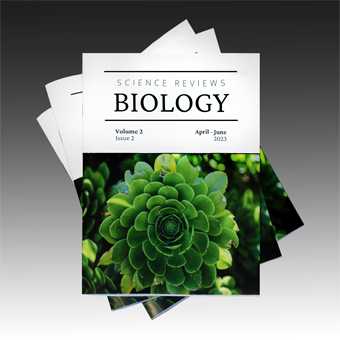
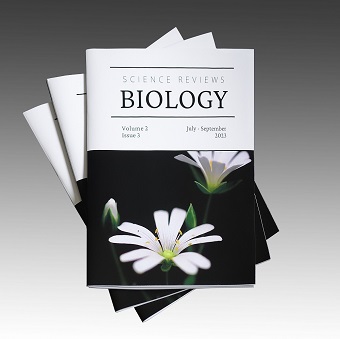
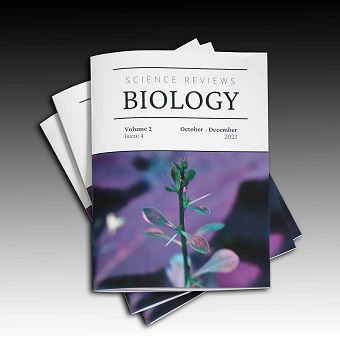
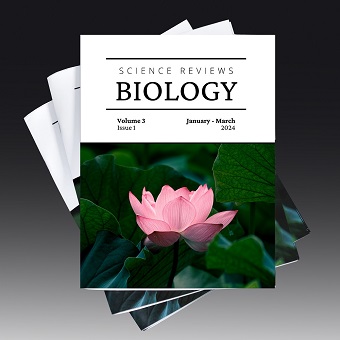
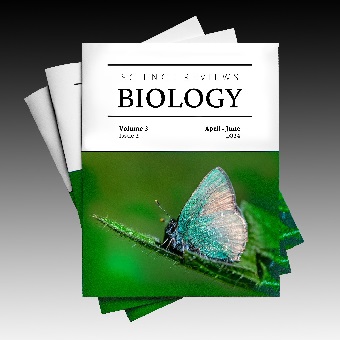


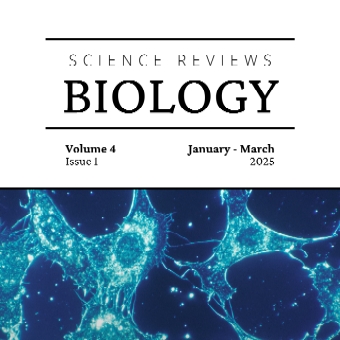
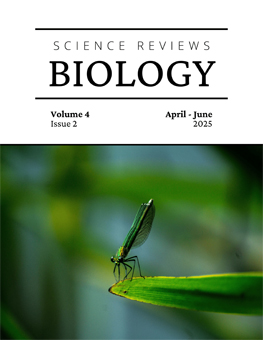



OCLC Number: 1347230101
Recent Articles
Current Taxonomic and Systematic Knowledge on South American Species of Myrtaceae: A ReviewMariana de Andrade Wagner, PhD
Abstract. The Myrtaceae family, renowned for its ecological and economic significance, comprises approximately 130 genera and over 6,500 species, predominantly distributed in tropical and subtropical regions. This review synthesizes current taxonomic, phylogenetic, and ecological research on South American Myrtaceae, with a focus on the hyper-diverse tribe Myrteae. Recently, species delimitation has been made particularly in genera such as Myrcia, Eugenia, and Myrciaria, while highlighting persistent gaps in understudied regions like the Amazon Basin and the Guiana Shield. Phylogenomic approaches have resolved long-standing complexities, yet challenges remain in reconciling plastid and nuclear data. Ecological studies underscore the family’s adaptability to geoclimatic variables and its role in ecosystem resilience, particularly in fragmented habitats like the Atlantic Forest and Andean Dry Forests. Conservation priorities include habitat protection, sustainable resource management, and genomic assessments of threatened taxa. The review calls for integrated methodologies, expanded fieldwork, and cross-border collaborations to address knowledge gaps and safeguard this vital plant family amid anthropogenic threats. Read More.
| Download PDF | References |
Cite as: Mariana de Andrade Wagner, (2025). Current Taxonomic and Systematic Knowledge on South American Species of Myrtaceae: A Review Science Reviews – Biology, 4(2), 21-29. https://doi.org/10.57098/SciRevs.Biology.4.2.3
Ion Channels and Human Disease: A Review of Recent Research Advances
Sergey N. Arkhipov, PhD
Abstract. Ion channels are molecular structures located in the plasma membranes of cells as well as in certain non-cellular components of the human body, animals, and other organisms. These channels play a crucial role in numerous physiological processes across various functional systems of a healthy body, including the central and peripheral nervous systems, the heart, kidneys, lungs, gastrointestinal tract, and the immune system. Dysfunction or abnormal overexpression of ion channels in tissues and organs of these systems is often associated with a wide range of pathological conditions and diseases. Targeting these disease-related ion channels with specific pharmacological inhibitors has become a well-established and widely accepted approach in biomedical research. In some cases, treatment with ion channel inhibitors has demonstrated clinical benefit, and in many others, it is regarded as a promising strategy for therapeutic intervention in ion channel-related disorders. This mini-review provides a concise overview of recent research advances (from 2022 to 2025) focusing on the role of ion channels in disease pathogenesis, as well as the therapeutic potential of specific ion channel inhibitors for improving clinical outcomes in both experimental models and human patients. Read More.
| Download PDF | References |
Cite as: Sergey N. Arkhipov, (2025). Ion Channels and Human Disease: A Review of Recent Research Advances Science Reviews – Biology, 4(2), 12-20. https://doi.org/10.57098/SciRevs.Biology.4.2.2
Epidemiological Surge and Control Challenges of Cutaneous Leishmaniasis in Pakistan: A Systematic Review
Wasia Ullah, PhD
Abstract. Cutaneous Leishmaniasis (CL) is a major public health concern in Pakistan, with an increasing incidence and new complexity in transmission dynamics, diagnosis, and treatment. This systematic review synthesizes findings from 100 papers (2015-2024) to examine the epidemiology, risk factors, molecular trends, and control measures for CL across different ecological zones of Pakistan. The study found a 133% increase in reported cases (from 12,000 in 2015 to 28,100 in 2024; χ² = 47.3, *p* < 0.001), with hyper endemic clustering in Khyber Pakhtunkhwa (42.3%), Baluchistan (31.1%), and Punjab's Thal Desert (19.2%) (Moran's I = 0.51, *p* = 0.008). Urban centers have a 2.24-fold greater prevalence than rural locations (15.2 vs. 6.8 per 10,000; OR = 2.9, 95% CI: 2.1-4.0), owing to overcrowding and inadequate sanitation. Molecular analysis of 1,200 isolates reveals that Leishmania tropica (67.8%) is the leading urban pathogen, while L. major (29.3%) predominates in dry locations. Two unique L. tropica genotypes (T3/T4) exhibit multidrug resistance, with treatment failure rates of 40.2% (RR = 1.8, *p* = 0.01). Sand-fly vector dynamics show temperature-dependent transmission, with Phlebotomus sergenti (urban, *r* = 0.78) and P. papatasi (rural, *r* = 0.82) abundances substantially associated with warming trends. Poverty (OR = 3.5, PAF = 41.2%), bad housing (OR = 2.8), and refugee status (OR = 2.6) are identified as significant socioeconomic variables. Control treatments have varying efficacy: indoor residual spraying lowers incidence by 40.8% (95% CI: 35.2-46.4%), exceeding insecticide-treated nets (33.7%) but at a higher cost. The emergence of antimonial-resistant strains and climate-induced vector expansion pose a danger to long-term control, demanding integrated solutions that include precision mapping, species-specific medicines, and community engagement. This analysis emphasizes the critical need for a national surveillance system, climate-adaptive solutions, and cross-sectoral coordination to reduce Pakistan's expanding CL burden in the face of ecological and demographic change. Read More.
| Download PDF | References |
Cite as: Wasia Ullah, (2025). Epidemiological Surge and Control Challenges of Cutaneous Leishmaniasis in Pakistan: A Systematic Review Science Reviews – Biology, 4(2), 1-11. https://doi.org/10.57098/SciRevs.Biology.4.2.1
Distribution, Diversity, and Ecological Traits of Earthworms in Different Habitats: Implications for Conservation and Management Practices
Mohd Hassan, Senior Research Fellow, Indian Institute of Integrative Medicine
Abstract. The present study investigated the distribution and diversity of earthworms in five different habitats, comprising grassland, agricultural fields, forests, wetlands, and plant-associated soil in Jammu region, Jammu and Kashmir, India. The study analyzed various environmental factors to understand their influence on the abundance and diversity of earthworms, which notably observed silty clay loam texture for forest, grasslands, and plant-associated habitat sites, whereas silt loam and silty clay were characteristic of wetland habitat and agricultural fields, respectively. The soil pH and organic carbon were highest in plant-associated soil and lowest observed in wetland habitat site. The agricultural field recorded the highest percentage of available nitrogen and the lowest observed in wetland. The findings revealed the distribution of 36 different types of genus/species across all habitats in which grassland habitats exhibited the highest abundance of earthworms, with 258 numbers followed by agricultural fields with 255, forests with 137, wetlands with 75, and plant-associated habitats with 72. Furthermore, the study demonstrated that all the earthworm species were significantly influenced by specific environmental factors in their respective habitats. However, in environments like agricultural fields and grasslands, soil parameters had minimal impact on species abundance. The study also identified the dominance of different ecological traits across habitats, highlighting the importance of morphometric traits in understanding the ecological function of earthworms in different habitats. Overall, the results could have practical implications for conservation and management practices in these ecosystems, providing insights into the distribution and diversity of earthworms in different habitats and their relationship with environmental factors. Read More.
| Download PDF | References |
Cite as: Mohd Hassan, (2025). Distribution, Diversity, and Ecological Traits of Earthworms in Different Habitats: Implications for Conservation and Management Practices Science Reviews – Biology, 4(1), 15-35. https://doi.org/10.57098/SciRevs.Biology.4.1.3
Antioxidant Effects Following Oral Administration of Foeniculum vulgare in Male Rats
Irfan Sajid, PhD, Shoaib Ahmed, PhD, Lubna Anis, M.Phil., Hafsah Khan, M.Phil., Syed Ikhlaq Hussain, PhD
Abstract. : Fennel (Foeniculum vulgare), a perennial herb belongs to the carrot family and comprises of yellow flowers and feathery leaves. Due to highly fragrance, it is widely used in cooking and is one of the primary components of absinthe. Fennel has become established along roadsides, in pastures, and in various open areas around the world. Present study was carried out to evaluate the antioxidant effects following fennel seeds administration in male albino rats. Twelve albino rats were divided into control and tests. Control was treated with normal saline while treatment was given at concentration of 200 mg/kg/ml of fennel seeds aqueous solution in oral form for three weeks. Antioxidant activities were evaluated by measuring the levels of Malondialdehyde, Catalase, Glutathione peroxidase and Glutathione reductase levels in blood. The administration of fennel seeds significantly enhanced the antioxidant activity showing active action against free radicals in body. It is suggested that fennel seeds can be used as a functional health boosting meal. Further neurochemical research is needed to confirm the mechanism at molecular level. Read More.
| Download PDF | References |
Cite as: Irfan Sajid, Shoaib Ahmed, Lubna Anis, Hafsah Khan, Syed Ikhlaq Hussain, (2025). Antioxidant Effects Following Oral Administration of Foeniculum vulgare in Male Rats Science Reviews – Biology, 4(1), 8-14. https://doi.org/10.57098/SciRevs.Biology.4.1.2
The Effect of Thermal Stress on Fish Development: A Mini-Review
Lindy Whitehouse, PhD
Abstract. : Projected temperature increases are predicted to significantly affect fish populations globally, impacting fish recruitment processes and altering population distribution. Fish embryos are perhaps at the most risk from temperature changes due to their sessile nature and overall sensitivity to temperature changes which could impact how well a fish population performs in a changing world. Research has shown that temperature can alter developmental trajectories, induce damage and abnormalities, increase development, and early hatching, and reduce survival. Other studies have shown that exposure to thermal stress can prime stress responses and result in changes in metabolic enzyme activity that persists post-hatch. Moreover, exposure to fluctuating temperature, which most closely mimics natural environments, can have a protective effect, increasing thermotolerance and survival while appearing to have no impact on developmental processes or hatching rate. Understanding how these early life stages respond to thermal stress and fluctuations is important for predicting how fish populations will respond to climate change. Read More.
| Download PDF | References |
Cite as: Lindy Whitehouse, (2024). The Effect of Thermal Stress on Fish Development: A Mini-Review Science Reviews – Biology, 3(4), 24-30. https://doi.org/10.57098/SciRevs.Biology.3.4.3
Gene Cluster Regulators from Plants to Microbes: Key Role in Vesicular Targeting, Transport of Intermediate Compounds, and Secondary Metabolite Biosynthesis
Prasanta Chakraborty, PhD
Abstract. : Plants and microbes (e.g., bacteria, fungi) produces various types of secondary metabolites (SMs) that may be used as nutraceuticals, defense molecules, drugs/antibiotics etc. Efficient biosynthesis of these SMs depend upon the transport and accumulation of biosynthetic intermediates, enzymes and transporters in a specific compartment of cells of the organism. Signals for biosynthesis of these important SMs often comes from the related gene clusters and their regulators situated inside or outside (global) the cluster. In bacteria, cluster situated regulators (CSRs), like SARPs (Streptomyces antibiotic regulatory proteins) and other regulators regulates biosynthesis of many important drugs and antibiotics, in fungi, 40% CSRs and 60% global regulators control the SM biosynthesis, whereas in plants mainly global regulators works. In this review, how these regulators play their part in the transport and efficient biosynthesis of some important compounds in plant and microbes will be discussed. Read More.
| Download PDF | References |
Cite as: Prasanta Chakraborty, (2024). Gene Cluster Regulators from Plants to Microbes: Key Role in Vesicular Targeting, Transport of Intermediate Compounds, and Secondary Metabolite Biosynthesis Science Reviews – Biology, 3(4), 7-23. https://doi.org/10.57098/SciRevs.Biology.3.4.2
Advances in Plant Breeding: Enhancing Crop Productivity, Resilience, and Sustainability Through Modern Techniques
Thirunahari Ugandhar, PhD
Abstract. Plant breeding plays a pivotal role in enhancing the genetic potential of plants, aiming to improve their characteristics such as yield, disease resistance, and stress tolerance. This paper provides an in-depth analysis of various plant breeding techniques, including traditional methods such as mass selection and hybridization, alongside modern innovations like genetic engineering and CRISPR (Clustered Regularly Interspaced Short Palindromic Repeats)/Cas9 gene editing. Each method is thoroughly analyzed to evaluate its effectiveness, potential applications, and limitations in terms of its specific applications and achievements in crop improvement, highlighting the crucial role of plant breeding in ensuring food security and sustainability in agriculture. By developing high-yield and resilient crop varieties, plant breeding not only addresses the challenges posed by climate change but also contributes to the economic viability of farming. The continuous evolution of plant breeding methods underscores the importance of research and innovation in meeting global food demands. Read More.
| Download PDF | References |
Cite as: Thirunahari Ugandhar, (2024). Advances in Plant Breeding: Enhancing Crop Productivity, Resilience, and Sustainability Through Modern Techniques Science Reviews – Biology, 3(4), 1-6. https://doi.org/10.57098/SciRevs.Biology.3.4.1
Genome Editing in Insects: CRISPR Technology and its Prospects
Muhammad Kashif Zahoor, PhD, Aftab Ahmad, PhD and Muhammad Zulhussnain, PhD
Abstract. Insects, as one of the largest animal groups, play a crucial role due to their vast diversity, economic significance in agriculture and cottage industries, and their ecological functions as pollinators and vectors of various diseases. Significant advancements in genetics have provided extensive information on gene identity and sequences for many insect species. These genetic resources have facilitated genome editing studies aimed at developing improved genetic traits. One such strategy is the Sterile Insect Technique (SIT), which has been effectively employed against the screwworm in North America and continues to be used for managing insect pests. Gene silencing via RNA interference (RNAi), a fundamental genomic tool in model insect research, has also been applied in various biological studies. However, its variable efficiency among insect pests has limited its widespread use. Other gene-editing approaches include the induction of Double-Strand Breaks (DSBs) in DNA using Zinc-Finger Nucleases (ZFNs) and Transcription Activator-Like Effector Nucleases (TALENs), which stimulate non-homologous end joining or homology-directed repair at targeted sequences. More recently, the CRISPR/Cas9 (Clustered Regularly Interspaced Short Palindromic Repeats/CRISPR-associated protein 9) system has rapidly emerged as a transformative genome-editing approach across multiple fields, including agriculture, insect resistance management, environmental safety, human health, and industry. This article provides an overview of various genome-editing techniques employed in insects, with a specific focus on the application and future potential of the cutting-edge CRISPR/Cas system, which holds promise in surpassing other genome-editing approaches. Read More.
| Download PDF | References |
Cite as: Muhammad Kashif Zahoor, Aftab Ahmad and Muhammad Zulhussnain, (2024). Genome Editing in Insects: CRISPR Technology and its Prospects Science Reviews – Biology, 3(3), 22-40. https://doi.org/10.57098/SciRevs.Biology.3.3.3
Recent Developments in Infectious Disease Research
Claire Cummins, MSc
Abstract. The field of infectious disease research is rapidly evolving and advancing, driven by the demand to address both current and emerging threats to global health. The recent COVID-19 pandemic underscored the criticality of infectious disease outbreak preparedness and response, while factors such as climate change, migration, and globalization continue to influence disease transmission dynamics. Innovative approaches to infectious disease research are more essential than ever to prevent future pandemics and the spread of vector-borne diseases. This comprehensive review article investigates some recent pertinent developments in infectious disease research, including the development of a novel serosurveillance platform, modeled after the one designed during the COVID-19 pandemic, aimed at tackling the growing global threat of arboviruses. Also investigated in this article is the repurposing and application of mRNA vaccine technology, initially developed during the pandemic, to address the complex challenge of tick-borne Lyme disease. Finally, we outline several novel and cutting-edge strategies aimed at tackling the ever-mounting crisis of antimicrobial resistance (AMR). Each of these innovations marks a significant step forward in global health security and preparedness, offering promising solutions to the challenges of a rapidly evolving world, while drawing on the lessons learned from past outbreaks and epidemics. Read More.
| Download PDF | References |
Cite as: Claire Cummins, (2024). Recent Developments in Infectious Disease Research Science Reviews – Biology, 3(3), 16-21. https://doi.org/10.57098/SciRevs.Biology.3.3.2
Emerging Bioengineering Approaches for Cancer and Tumor Therapy
Humara Naz Majeed, PhD and Aftab Ahmad, PhD
Abstract. Cancer has become a significant socioeconomic burden globally, with millions of new cases and deaths each year. The promising field of bioengineering has recently undergone significant advancements, providing new methods for combating cancer. Increasing attention has been directed toward understanding the molecular mechanisms of human diseases, supported by the availability of various genetic tools and rapid technological advancements. These developments have enabled the use of the latest gene therapy techniques for cancer treatment, including gene editing, gene deletion, and correcting defective genes through methods such as TALENs, Zinc fingers, RNAi, CRISPR, site-directed mutagenesis (SDM), and enzyme therapy to modulate catalytic activity. In addition, bioengineering vaccines like mRNA vaccines, bioinformatics, computational tools, artificial intelligence (AI), nanotechnology, and chemotherapy are emerging as significant cancer treatment strategies. Among these, gene editing and gene therapy have gained particular attention in recent years and are often used in combination with other therapeutic approaches. The engineering of enzymes and advancements in nanotechnology have also significantly progressed. AI and bioinformatics have contributed to more precise diagnosis, prediction, and prognosis, enabling tailored treatment of cancer and tumors. Imaging and radiotherapy, enhanced by AI, have improved surgical outcomes, even from remote locations. Precision oncology has emerged, using bacteria and viruses to target tumors directly. In this review, we discuss recent advancements and challenges in various cancer therapies. Read More.
| Download PDF | References |
Cite as: Humara Naz Majeed and Aftab Ahmad, (2024). Emerging Bioengineering Approaches for Cancer and Tumor Therapy Science Reviews – Biology, 3(3), 1-15. https://doi.org/10.57098/SciRevs.Biology.3.3.1
Evolutionary Genomics of Tunicates
Luigi Caputi, PhD
Abstract. Tunicates are the closest living relatives of vertebrates and are a group comprised exclusively of marine animals. In the current review, I aim to present some of the most interesting aspects of tunicate genomics within an evolutionary context to a non-specialized scientific audience. Tunicates are of scientific interest for many reasons. First, their phylogenetic position, as well as their internal evolutionary relationships, are heavily debated. Second, multiple species have been studied as developmental biology and evolutionary models. Third, some tunicate species play crucial ecological roles and functions. Lastly, tunicates have become an interesting field of study in evolutionary genomics since the beginning of the new millennium. Tunicate genomes are atypical within chordates, bearing many hints of divergence and differentiation. In addition, their genomes are fast-evolving and highly plastic, with functional genetic units uncharacteristically often organized in operons. It is likely that continued research efforts surrounding tunicates will continue to challenge current understanding of the mechanisms driving molecular adaption as well as evolutionary genomic processes. Read More.
| Download PDF | References |
Cite as: Luigi Caputi, (2024). Evolutionary Genomics of Tunicates Science Reviews – Biology, 3(2), 22-32. https://doi.org/10.57098/SciRevs.Biology.3.2.3
Next Generation Sequencing Technologies, Bioinformatics and Artificial Intelligence: A Shared Timeline
Martina Elena Tarozzi, PhD
Abstract. This review provides a comprehensive overview of the fast-paced and intertwined evolution of three pivotal fields: next-generation sequencing (NGS) technologies, bioinformatics, and artificial intelligence (AI). The paper begins by tracing the development of sequencing technologies and highlights how advancements in genetic sequencing have led to an explosion of biological data, necessitating the rise of bioinformatics for data management and analysis. The review next covers the primary steps and methods used in bioinformatic analysis and concludes by reporting some of the technical and biological challenges in which AI methods have been applied. Read More.
| Download PDF | References |
Cite as: Martina Elena Tarozzi, (2024). Next Generation Sequencing Technologies, Bioinformatics and Artificial Intelligence: A Shared Timeline Science Reviews – Biology, 3(2), 13-21. https://doi.org/10.57098/SciRevs.Biology.3.2.2
Unlocking Cellular Control: The Promise of PROTACs in Disease Intervention
Aishani Kumar, Thendral Yalini, Sunil Kumar C
Abstract. The discovery of proteolysis-targeting chimeras (PROTACs)[6] is among the most exciting and promising avenues in cancer therapy. [14] These fascinating compounds signify a paradigm shift from traditional approaches to medication development, offering a new idea that leverages the complexities of biological mechanisms to accomplish highly focused degradation of particular proteins implicated in pathological processes.[16] This novel strategy has the potential to address a number of drawbacks with conventional therapy techniques, such as the development of drug resistance and unexpected adverse effects resulting from interactions that are not intended. [14] The fundamental attraction of PROTACs is their distinct mode of action, which is based on controlling the cell's own machinery for protein degradation.[11] This orchestrated degradation translates to a substantial reduction in the levels of disease-driving proteins, often leading to the disruption of critical pathways involved in cancer growth and progression.[9] The in-depth principles underlying PROTAC technology are thoroughly explored in this review study, which also provides insight into the complex chemical mechanisms that enable these chimeric molecules to specifically degrade certain proteins while leaving others intact. Showcasing the potential of PROTACs as a revolutionary force in targeted cancer therapy, and focusing on its application in prostate and breast cancer especially, the article draws from a comprehensive compilation of preclinical and clinical studies, advancements, and breakthroughs in the field. [10] The methods used to create and refine PROTACs for various cancer types will be examined throughout the review, along with the subtleties of the ligand and linker choices that are crucial to their effectiveness and selectivity.[6] The difficulties and possibilities of transferring this ground-breaking technology from the lab to clinical practice will also be thoroughly examined, with an emphasis on issues like bioavailability, administration strategies, and potential resistance mechanisms.[9] Through the integration of perspectives from various studies, the objective is to present a thorough but succinct review of the state of ongoing PROTAC research, emphasizing both, noteworthy advancements and the important issues that still need to be resolved. In the end, our investigation into PROTACs aims to shed light on how they can change the face of cancer therapy by providing a preview of a day when targeted protein degradation of disease-causing proteins would lead the way in novel therapeutic approaches.[9] Read More.
| Download PDF | References |
Cite as: Aishani Kumar, Thendral Yalini, Sunil Kumar, (2024). Unlocking Cellular Control: The Promise of PROTACs in Disease Intervention Science Reviews – Biology, 3(2), 1-12. https://doi.org/10.57098/SciRevs.Biology.3.2.1
Glycosyltransferases: Unraveling Molecular Insights and Biotechnological Implications
Humara Naz Majeed,PhD, Sumaira Shaheen,PhD and Muhammad Kashif Zahoor,PhD
Abstract. Glycosyltransferases (GTs) are present in almost all living organisms; plants, animals and microorganisms. GTs transfer sugar molecule from nucleotide sugars to a wide range of molecules including hormones, secondary metabolites, biotic and abiotic chemicals. When glycosyltransferases add a sugar moiety in any molecule, the hydrophilicity of that molecule changes and thus alter the chemical properties of the molecule. This phenomenon is vital for appropriate working of living organisms. For the first time, X-ray structure of bacteriophage T4-glucosyltransferase was reported in 1994. In bacteria, GTs play essential roles in various biological processes such as cell wall biosynthesis, surface glycosylation and virulence factor production. The point mutation as well as the domain-swapping has been reported in Bacteria. The sequence change as well as the whole cells has been engineered in bacteria too. GTs play very important role in survival, growth, development, metabolism, detoxification, insecticide resistance, chitin formation, chemosensation, defense and immunity, involved in various signaling pathways, etc. In plants, glycosyltransferase enzymes play essential role in biosynthesis of cell wall components, secondary metabolites, and signaling molecules. GTs are involved in the transfer of sugar moieties from activated donor molecules to specific acceptor molecules, leading to the formation of glycosidic bonds. GTs modify flavonoids, alkaloids and terpenoids, etc. with sugar residues and alter the solubility, stability, and bioactivity of these compounds and regulate the plant defense mechanism and interaction with insects, microorganisms and other organisms. GTs have direct impact on plant homeostasis. Site directed mutagenesis (SDM) in UGTs or GTs cause a change in substrate specificity and produce increased or total loss in the catalytic activity GTs. This kind of change demonstrated that a change in substrate specificity could cause better glycosylation and perked up anticancer activity of UGTs. GTs are also involved in glycosylaton of phytohormones and regulate their metabolism and signaling pathways. GTs are involved in the activity, stability, and transport of these hormones and influence the plant growth, development, and responses to various environmental stimuli. Four UGT families encoding 200 genes are reported in humans which regulate cell signaling, protein folding, immune response, growth and development, detoxification, metabolism and elimination of drugs, DNA methylation and histone modifications, transcriptional regulation, post-transcriptional regulation and post-translational regulation, synthesis of human blood group antigens A and B and recently GTs are also reported as linked with COVID-19-related loss of smell or taste. Various bioinformatics tools have been developed which would help analyse in silico, the structure of the GTs using any reference enzyme. The activity and the ordered structures along with various stability assays can be performed before to conduct in vitro analyses such as mutagenesis. Targeted mutagenesis have been reported through site directed mutagenesis (SDM) or domain-swapping. Standard protocols of molecular biology i.e. transformation, protein expression, extraction and purification followed by mass spectrometric analysis has been described. This molecular technique would direct future endeavours to engineer more glycosyltransferases to augment their activity with different substrates and provide a basis for more exploration of GTs as an active compound for potential anti-cancer therapeutics. Additionally, the role of GTs in medicine, food industry, pharmaceutical industry and agriculture is discussed. More research work is needed for the better understanding of the biological processes and the mechanisms of glycosyltransferases involved in cancer, tumor, drug metabolism etc. New era of engineering is awaited to engineer these GT enzymes in vitro to get them boost in industry as well as to help cure cancer and other diseases as well. Read More.
| Download PDF | References |
Cite as: Humara Naz Majeed, Sumaira Shaheen, Muhammad Kashif Zahoor, (2024). Glycosyltransferases: Unraveling Molecular Insights and Biotechnological Implications Science Reviews – Biology, 3(1), 16-31. https://doi.org/10.57098/SciRevs.Biology.3.1.3
Artificial intelligence for Next generation sequencing data analysis
Martina Elena Tarozzi, PhD
Abstract. In the rapidly evolving field of genomics, our capacity to decipher genetic data encoded in DNA has been transformed by Next Generation Sequencing (NGS) technologies. These advanced technologies produce an enormous volume of data, posing substantial challenges in extracting meaningful biological insights. Artificial intelligence (AI) algorithms offer distinctive possibilities to unravel the biological information embedded in such extensive and intricate datasets. This review offers a synopsis of AI classifications and algorithms, elucidating how these techniques can be employed on sequencing data. Subsequently, a selection of the most typical, promising, or illustrative applications of AI on NGS data to tackle unresolved technical or biological issues are showcased. Read More.
| Download PDF | References |
Cite as: Martina Elena Tarozzi, (2024). Artificial intelligence for Next generation sequencing data analysis Science Reviews – Biology, 3(1), 9-15. https://doi.org/10.57098/SciRevs.Biology.3.1.2
The Role of Non-Coding RNAs in Cancer Progression: A Concise Comprehensive Review
Muhammad Tahir Hayat, PhD
Abstract. Cancer is among one of the most widespread diseases globally and poses a great threat to human wellbeing. Non-coding RNAs (ncRNAs) compose most transcripts but cannot undergo translation. Thus, no proteins are made by them. However, studies have shown that ncRNAs can mimic both oncogenes and tumour suppressor genes involved in cancer. This review discusses recent research on the involvement of ncRNAs in the progression, diagnosis, and treatment of cancer. These ncRNAs consist of microRNAs, long non-coding RNAs (lncRNAs) and circular RNAs (circRNAs). This concise paper aims to inform researchers, clinicians, and scientists in navigating the dynamic field of ncRNAs in cancer with the goal of fostering collaboration to translate discoveries into practical clinical advancements. Read More.
| Download PDF | References |
Cite as: Muhammad Tahir Hayat, (2024). The Role of Non-Coding RNAs in Cancer Progression: A Concise Comprehensive Review Science Reviews – Biology, 3(1), 1-8. https://doi.org/10.57098/SciRevs.Biology.3.1.1
Climate Change and Avian Populations: a Review
Rae Osborn, PhD
Abstract. Avian species fulfill many important roles in their respective ecosystems as seed dispersers, pollinators, and predators. Avian populations have previously, currently, and are likely to be affected by climate change. Climate change can cause distribution ranges to shift, migration patterns to alter, and reproductive success to decrease. Climate change may also impact plants and invertebrate prey, thereby modulating food availability and accessibility and likely reproductive potential. The impact of climate change on avian species is difficult to predict given the complexities of bird natural histories and the shifting importance of ecological variables on survival. Given the global biological importance of bird species, conservationists need to be cognizant of these potential changes in avian populations as well as their impacts and design appropriate action plans based on the most accurate available data. Read More.
| Download PDF | References |
Cite as: Rae Osborn, (2023). Climate Change and Avian Populations: a Review. Science Reviews – Biology, 2(4), 7-12. https://doi.org/10.57098/SciRevs.Biology.2.4.2
Acknowledging the Approval of World-First Gene Therapy for Sickle Cell Disease Through CRISPR-Mediated Gene Editing
Martina Rossi, PhD
Abstract. Letter to Editor.
| Download PDF | References |
Cite as: Martina Rossi, (2023). Acknowledging the Approval of World-First Gene Therapy for Sickle Cell Disease Through CRISPR-Mediated Gene Editing. Science Reviews – Biology, 2(4), 15-18.
https://doi.org/10.57098/SciRevs.Biology.2.4.3
Review of the Role of Bees as Ecosystem Engineers in Nature
Shahmshad Ahmed Khan, PhD candidate
Abstract. Bees are a highly important group, providing a multitude of services to ecosystems, most notably through pollination. While much of the research on bees has traditionally focused on their role in pollinating a variety of wild and cultivated crops, this review paper expands the discourse by examining their functions as ecosystem engineers. Traditional definitions of ecosystem engineers exclude pollinators due to their nonphysical modifications of habitats for other species. However, contemporary studies challenge this perspective, recognizing pollinators as integral ecosystem engineers who offer a range of direct and indirect ecological services. For instance, bees’ pollination activities lead to the formation of dry fruits that subsequently serve as shelters for various organisms. In addition, ground-nesting bees modify soil composition through mechanisms such as aeration and bioturbation. This review aims to elucidate the transformative impact bees have as ecosystem engineers, thereby enhancing our understanding of their ecological importance. Read More.
| Download PDF | References |
Cite as: Shahmshad Ahmed Khan, (2023). Review of the Role of Bees as Ecosystem Engineers in Nature . Science Reviews – Biology, 2(4), 1-6. https://doi.org/10.57098/SciRevs.Biology.2.4.1
Advancements and Challenges in Gene Therapy Approaches for Sickle Cell Disease: A Comprehensive Review
Martina Rossi, PhD
Abstract. Sickle cell disease (SCD) is an autosomal recessive genetic blood disorder that occurs when both alleles of the HBB gene have mutations, leading to the production of abnormal haemoglobin (HbS). The presence of HbS causes red blood cells (RBCs) to take on the distinctive sickle-shaped form associated with the disease. This, in turn, leads to blockages in blood vessels, decreased blood circulation, and organs’ damage. Traditional treatments such as blood transfusions and others offer relief but come with their own limitations and associated risks. Gene therapy has emerged as a promising paradigm shift in the quest to cure SCD, offering personalised solutions by targeting the genetic root of the disease. This review article explores the principles and recent advancements in gene therapy for SCD. However, before gene therapy can become the main curative strategy for this disease, several challenges need to be overcome including the need for long-term safety and efficacy evaluations. Ongoing research and innovation hold the promise of enhanced treatments and the potential for a widely available gene therapy, ultimately improving the quality of life for individuals living with SCD. Read More.
| Download PDF | References |
Cite as: Martina Rossi, (2023). Advancements and Challenges in Gene Therapy Approaches for Sickle Cell Disease: A Comprehensive Review. Science Reviews – Biology, 2(3), 18-24. https://doi.org/10.57098/SciRevs.Biology.2.3.3
Emerging Trends of Human Consumption of Insects and Their Future Conservation
Saboor Ahmad, PhD and Shufa Xu, PhD
Abstract. In recent years, there has been a notable surge in the global interest surrounding the consumption of insects, known as entomophagy. This trend is propelled by its potential to address various pressing challenges. Entomophagy is deeply rooted in many cultures historically and is regarded as a sustainable solution to contemporary problems such as food security, environmental sustainability, and public health. In this context, this paper explores the emerging trends in human insect consumption and underscores conservation's pivotal role in securing the future of edible insects. This study unveils the multifaceted benefits of entomophagy by emphasizing the cultural significance of insects as a food source, their environmental advantages, and their potential to improve nutrition and reduce the ecological footprint of food production. Notably, various insects such as crickets, grasshoppers, termites, mealworms, and silkworm provide the primary sources of the human diet, including proteins, fats, vitamins, and minerals. Simultaneously, this review sheds light on the challenges posed by overexploitation, and habitat destruction, necessitating robust strategies for insect conservation. The paper advocates for sustainable harvesting, habitat restoration, public education and awareness, and innovative market strategies as critical tools for preserving insect biodiversity while promoting responsible insect consumption. Ultimately, entomophagy and insect conservation convergence presents an intriguing paradigm for a more sustainable and resilient global food system. Read More.
| Download PDF | References |
Cite as: Saboor Ahmad, Shufa Xu, (2023). Emerging Trends of Human Consumption of Insects and Their Future Conservation. Science Reviews – Biology, 2(3), 8-17. https://doi.org/10.57098/SciRevs.Biology.2.3.2
Decoding the DNA of Scat and the Application of Genetic Methodologies to Understanding Carnivore Diet
Charlotte E. Hacker, PhD
Abstract. Carnivore species are vital to ecosystem function and maintenance. One key component to understanding carnivore ecology and the most effective means of management is knowledge of dietary resource use. Traditional methods used to study carnivore diet, such as microhistology, have several technical and logistical shortcomings. These have hindered the quality and quantity of data that shape understanding of how carnivores exploit prey. Advances in genetic methodologies and their application to wildlife biology has transformed the manner in which information about species can be gained. DNA metabarcoding is one such example. With this approach, genetic sequences present in scat can be determined via next-generation sequencing and matched to reference databases, revealing the carnivore that deposited the scat and the prey it consumed. DNA metabarcoding has the ability to overcome many of the previous challenges associated with dietary analysis and works to advance and inform current knowledge surrounding carnivore ecology, predator-prey relationships, conflicts between carnivores and humans, and potential adaptability to large-scale landscape shifts. Its use has provided novel insights on numerous carnivore species to help inform research priorities and wildlife policies, including those living in unique fragile environments such as the Qinghai-Tibetan Plateau of China. The continued development and increased capacity of molecular dietary analysis via DNA metabarcoding has the promise to grossly improve carnivore conservation management strategies on a global scale. Read More.
| Download PDF | References |
Cite as: Charlotte E. Hacker, (2023). Decoding the DNA of scat and the application of genetic methodologies to understanding carnivore diet . Science Reviews – Biology, 2(3), 1-7. https://doi.org/10.57098/SciRevs.Biology.2.3.1
Using spore-forming bacteria to treat cancer: recent advancements in clostridial-based therapies 💰
Raquel Rodrigues, PhD
Abstract. The use of bacteria in cancer therapy has emerged as a promising approach, offering unique advantages for targeted treatment and immunotherapy. This review paper explores some recent advances in the application of bacteria, particularly Clostridium species, in cancer therapy. For instance, the Clostridial-Directed Enzyme Prodrug Therapy (CDEPT) utilises non-pathogenic strains of Clostridium as carriers for targeted delivery of anti-cancer drugs to solid tumour cells. This strategy aims to minimise systemic side effects associated with traditional chemotherapy. Additionally, Clostridium novyi and Clostridium sporogenes present oncolytic properties and have shown potential for tumour regression in preclinical models. The engineering of these bacteria to produce cytokines, such as interleukin-12 (IL-12) and interleukin-2 (IL-2), further enhances their therapeutic potential by activating the immune system to target cancer cells. Clinical trials in humans have demonstrated the feasibility and safety of C. novyi-based therapies, and early results indicate potential efficacy in tumour regression. Overall, this review provides valuable insights into the multifaceted roles of bacteria, particularly Clostridium species, in cancer therapy, emphasizing their potential as targeted therapeutics and immunomodulators for improved cancer treatment outcomes. Read More.
| Download PDF | References |
Cite as: Raquel Rodrigues, (2023). Using spore-forming bacteria to treat cancer: recent advancements in clostridial-based therapies . Science Reviews – Biology, 2(2), 30-39. https://doi.org/10.57098/SciRevs.Biology.2.2.3
The article has been granted free publication and awarded an honorarium.
Avian erythrocytes and granulocytes - a review
Ananya Bhattacherjee, PhD
Abstract. This study reports on the morphology of red blood cells and agranulocytes in various types of birds, such as rheas, emus, ostriches, chickens, and geese. Though all of them have the typical avian similarity in blood cells, yet there are some differences. Along with normal and mature erythrocytes, lymphocytes, and monocytes, the present study also focuses on rubricytes, reticulocytes, poikilocytes, polychromatophilic erythrocytes, reactive lymphocytes, pleomorphic monocyte nuclei, etc. Read More.
| Download PDF | References |
Cite as: Ananya Bhattacherjee, (2023). Avian Erythrocytes and Agranulocytes - a Review . Science Reviews – Biology, 2(2), 21-29. https://doi.org/10.57098/SciRevs.Biology.2.2.2
All-natural 5-MeO-DMT sigma receptor 1 agonist and its therapeutic impact in mental and neurodegener-ative diseases through mitochondrial activation
Milena Batalla, PhD
Abstract. The sigma-1 receptor S1R is a chaperone that resides mainly at the mitochondrion-associated endoplasmic reticulum ER membrane MAM, it is considered a “pluripotent modulator” in living systems, plays a critical role in maintaining neuronal homeostasis and acts as a dynamic pluripotent modulator in living systems. Given its specific localization at the MAM, S1R plays a major role regulating mitochondrial function, it is a therapeutic target in mental and neurodegenerative diseases including Alzheimer’s disease, Parkinson’s disease. N,N Dimethyl Tryptamine DMT is the S1R endogen agonists and we review the role of all-natural 5-methoxi-N,N-dimethyltryptamine 5-MeO-DMT S1R agonist that produces high levels of ego dissolution or oceanic boundlessness higher ratings of satisfaction with life and lower ratings of depression and stress. In vitro the 5-Meo-DMT shows strong modulation of synaptic and cellular plasticity in neurons. 5-MeO-DMT neuropharmacological S1R agonist is implicated in cellular bioenergetics activation, antiapoptotic and mitochondrial regulation of epigenetic landscape in neurons. S1R has been considered as a controller of cell survival and differentiation in neurons. The pharmacological benefits of all-natural 5-MeO-DMT are currently under research. This review compendia results, highlighting the key molecular mechanisms of S1Rs on mitochondrial functions and epigenetic modifications involved in the health and sickness phenotype development, and describe the possible pharmacological use of all-natural 5-MeO-DMT to “rescue” patients from sickness phenotype through mitochondrial activation. We focus on all-natural 5-MeO-DMT its clinical therapeutic implications benefit long-term effects on mental health and well-being of the patient possibly reprogramming and remodeling the epigenome, particularly in mental and neurodegenerative diseases. Read More.
| Download PDF | References |
Cite as: Milena Batalla, (2023). All-natural 5-MeO-DMT sigma receptor 1 agonist and its therapeutic impact in mental and neurodegener-ative diseases through mitochondrial activation Science Reviews – Biology, 2(2), 1-20. https://doi.org/10.57098/SciRevs.Biology.2.2.1
Intratumoural heterogeneity as a major challenge for cancer modelling and successful treatment 💰
Johanna Prüller, PhD
Abstract. Cancer heterogeneity refers to the fact that cancer cells are characterised by different genomic/transcriptomic/proteomic compositions, which often confer behavioural properties, such as enhanced drug resistance, survival and propensity to form metastasis. Modern methodology, such as single-cell barcoding, now allows a deeper look into this mechanic, and therefore a possibility to derive more efficient, new treatments. However, cell culture approaches are commonly used to evaluate those novel approaches, and the ability to faithfully model cancer heterogeneity is still in its infancy. Read More.
| Download PDF | References |
Cite as: Johanna Prüller, (2023). Intratumoural heterogeneity as a major challenge for cancer modelling and successful treatment. Science Reviews – Biology, 2(1), 12-19. https://doi.org/10.57098/SciRevs.Biology.2.1.2
💰 The article has been granted free publication and awarded an honorarium of $300.00.
Biomimetic nanoparticles for cancer targeting and drug delivery
Sahil Malhotra, PhD
Abstract. Cellular membrane engineered nanoparticles (NPs) have shown immense potential for anti-cancer drug delivery applications. In principle, cell membrane of any type of cells can be processed to obtain purified cellular membrane which can self-assemble to form stable and highly robust nanovesicles. These nanovesicles retain lipid-bilayer architecture of host’s cells and much of the surface biomarkers and proteins are conserved during top-down approach. Interestingly, nanovesicles have exhibited long plasma circulation and appreciable tumour specific binding, which is largely suggestive of their biomimetic properties. Many pioneer studies have demonstrated their ability to encapsulate different chemotherapeutic agents and photosensitizers of varied chemical complexities, and releasing them in a triggered fashion. Additionally, the novel NPs system has been developed for cancer immunotherapy. The review discusses some of the important research and applications of cellular membrane derived nanovesicles for different forms of cancer therapy and their potential to be developed as personalized nanomedicine. Read More.
| Download PDF | References |
Cite as: Sahil Malhotra, (2023). Biomimetic Nanoparticles for Cancer Targeting and Drug Delivery. Science Reviews – Biology, 2(1), 1-11. https://doi.org/10.57098/SciRevs.Biology.2.1.1 (The DOI link will be activated on April 30, 2023.)
Re-evaluating the role of antibodies in tuberculosis 💰
Pia Steigler, PhD
Abstract. Tuberculosis (TB) is a disease found in every country on Earth. About a quarter of the global population is estimated to be infected with Mycobacterium tuberculosis, the causative agent of TB, with over 10 million new TB cases reported annually. Currently, TB ranks as the second leading infectious killer after COVID-19. Research to develop novel interventions against TB represents a global health priority. TB research over the last several years focused on cellular immune responses, while the humoral response was largely neglected. This mini-review discusses evidence supporting a protective role of antibodies in TB, and a potential role of antibodies in TB vaccines and diagnosis. Read More.
| Download PDF | References |
Cite as: Pia Steigler, (2022). Re-evaluating the role of antibodies in tuberculosis. Science Reviews – Biology, 1(2), 20-30. https://doi.org/10.57098/SciRevs.Biology.1.2.3
💰 The article has been granted free publication and awarded an honorarium of $300.00.
Therapies for sensory organ disorders
Rebecca L Bricker, PhD
Abstract. Sensory organ disorders, such as visual impairment, hearing loss, and olfactory dysfunction, affect a significant percentage of the population. There are no effective therapies to restore cell damage and tissue function to these sensory organs. Human pluripotent cells (hPSCs) have the potential to expand out to an unlimited number of cells and differentiate into any cell type of the body, and therefore have high potential to restore tissue function in transplantation cell therapies for sensory organ disorders. This review elaborates on the specific sensory cells for the vision, auditory, and olfactory tissues that were generated from hPSCs. It then describes the effectiveness of using hPSC-derived sensory progenitors in animal models of disease and what needs to be done next in order to progress. Read More.
| Download PDF | References |
Cite as: Bricker R., (2022). Therapies for sensory organ disorders. Science Reviews – Biology, 1(2), 9-19. https://doi.org/10.57098/SciRevs.Biology.1.2.2
Recognition of exosomes and their role in new technologies
Olesya Gusachenko, PhD
Abstract. Exosomes or, more broadly, small extracellular vesicles are produced by all cells. They contain an array of biologically active molecules by which exosomes can influence the extracellular environment and affect the properties of other cells. Recognition of their biological role has come a long way from the mere function in the disposal of cellular waste to a concept of universal intercellular vehicle mediating near and long-distance communication in normal and pathological states. As a result, in recent years exosomes have gained much interest in their potential exploitation for therapeutic use. This short review is aimed at presenting a brief exploration of the history of exosome recognition coupled with a snapshot of newly developing exosome-based technologies, touching upon some recent achievements and examples of application. Read More.
| Download PDF | References |
Cite as: Gusachenko O., (2022). Recognition of exosomes and their role in new technologies. Science Reviews – Biology, 1(2), 1-8. https://doi.org/10.57098/SciRevs.Biology.1.2.1
Recent insights into the use of invertebrates as indicators of habitat quality
by Rae Osborn, PhD
Abstract. Invertebrates are an important part of aquatic and terrestrial systems, and are, thus, useful as indicators of environmental changes. Habitat quality can be assessed by noting changes in species composition, and relative abundances, using various indices, and by alterations in physiology and morphology of what are known as indicator species. Research shows that invertebrates can be used to indicate if habitat conditions have changed, either worsened or improved. This is why identifying indicator species is crucial. This article covers some recent findings of how invertebrate organisms can be helpful in aquatic and terrestrial ecosystems in indicating ecosystem and habitat deterioration. We also discuss what makes a good indicator species and the types of taxa that have been used in this way. Read More.
| Download PDF | References |
Cite as: Osborn R., (2022). Recent insights into the use of invertebrates as indicators of habitat quality. Science Reviews – Biology, 1(1), 28-32. https://doi.org/10.57098/SciRevs.Biology.1.1.5
Recent developments in microbiology
by Claire Cummins, BSc
Abstract. Research in microbiology is a dynamic and exciting field, and this review article outlines some recent significant developments within microbiology including using shotgun metagenomics to uncover the connection between diet and lifestyle and superbug infections, the current state of Ebola virus diagnostic tests, and the potential of treating superbug infections via innovative phage virus therapy as an alternative to antibiotics. This review also explores two studies using the CRISPR gene editing technique, which has been a revolution within microbiology. The first study undergoes genetic engineering of potatoes to improve their nutritional and industrial applications, which has important implications in improving food stability as well as bolstering production. The second study utilizes CRISPR to engineer bacteria to kill themselves on command, which is important to prevent the excessive spread bacteria that are used for a variety of applications from eating plastic waste in the environment to treating the diseased human gut. Engineering these so-called ‘kill switch’ allows these bacteria to be utilized for their intended purpose without growing uncontrollably in the environment or in the gut. Read More.
| Download PDF | References |
Cite as: Cummins, C., (2022). Recent Developments in Microbiology. Science Reviews – Biology, 1(1), 22-27. https://doi.org/10.57098/SciRevs.Biology.1.1.4
CRISPR/Cas9, a decade of genome editing tools to fix the DNA
by Lúcia Santos, PhD
Abstract. This year marks the 10th anniversary of the CRISPR/Cas9 genome editing discovery. Since its discovery in 2012, the CRISPR/Cas9 system has become an indispensable tool in many research fields. This system has been extensively characterized and further optimized to broaden its editing capabilities. Depending on the DNA modification to make, there are now available several editing agents. In this review, we provide an overview of the CRISPR/Cas9 system and how it can be used to fix the DNA using the traditional repair mechanisms non-homologous end joining (NHEJ) and homology-directed repair (HDR), and the most recent gene editing approaches – base editing and prime editing.
| Download PDF | References |
Cite as: Santos, L., (2022). CRISPR/Cas9, a decade of genome editing tools to fix the DNA. Science Reviews – Biology, 1(1), 15-21. https://doi.org/10.57098/SciRevs.Biology.1.1.3
New insight into phosphoproteome research improves the in-depth understanding of honey bee biology 💰
by Saboor Ahmad (PhD cand.) and Jianke Li, PhD
Abstract. Protein phosphorylation is essential in a variety of biological activities. Notably, phosphoproteomics has opened new possibilities for honey bee biological study at the molecular and biochemical levels, considering the advancements in LC-MS/MS apparatus and computational analysis. This review extensively evaluated recent advances in honey bee biology utilizing phosphoproteomics methodologies in terms of progressive physiology, age polytheism, and biological changes in some organs, tissues, and cells. Furthermore, a comprehensive phosphoproteomic is necessary for new insight into honey bee biology, a better understanding of the research subject, and determining prospective future research areas.
| Download PDF | References |
Cite as: Ahmad, S.; Li J. (2022). New insight into phosphoproteome research improves the in-depth understanding of honey bee biology. Science Reviews – Biology, 1(1), 7-14. https://doi.org/10.57098/SciRevs.Biology.1.1.2
💰 The article has been granted free publication and awarded an honorarium of $300.00.
Recent advances in human physiology
by Lindy Whitehouse, PhD
Abstract. The study of human physiology provides important insight into the complex nature of the human body, increasing our understanding of the various systems and processes that occur to keep us alive. Developments in this field provide the basis for the development of novel treatments and therapies that are crucial for the advancement of medicine and improving the health and well-being of people around the world. Recent research into the pathogenesis of SAR-CoV-2 and the discovery of novel treatments for its symptoms have bought this field of science to the forefront. Yet there have also been several other recent advances that have increased our understanding of the human body and provided opportunities for the development of new medicines and therapies. Here we discuss the latest advances in this field, highlighting recent progression in our understanding of cancer metastasis, the development of the brain, and the use of organoids in the study of the human body. Finally, we examine the work of two physiologists that received the Nobel Prize in 2021 for their work in understanding the mechanism behind how humans feel the heat, cold, and mechanical force. Read More.
| Download PDF | References |
Cite as: Whitehouse, L., (2022). Recent Advances in Human Physiology. Science Reviews – Biology, 1(1), 1-6. https://doi.org/10.57098/SciRevs.Biology.1.1.1